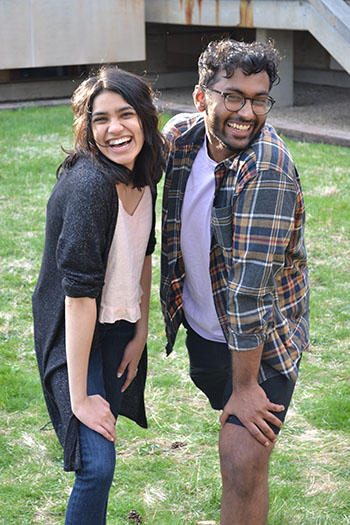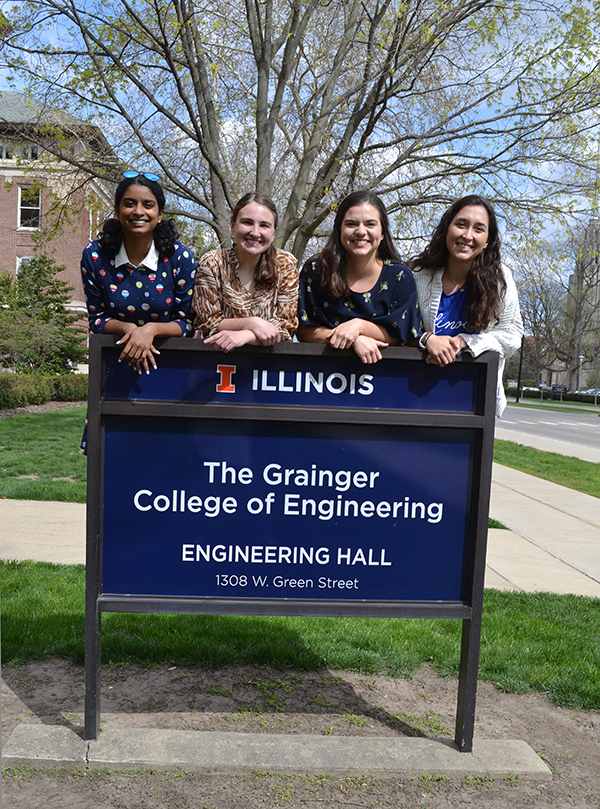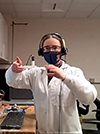Middle School Girls Experience Math’s Role in Art During GEMS Workshops

Emily Heath (left), AWM’s Outreach Chair, working with a GEMS participant during the string art workshop.
March 27, 2018
What do origami, tessellation, and string art have to do with math? Hoping to find out, a number of local 6th–9th graders participated in the GEMS (Girls Engaged in Math and Science) Workshops which ran for four Saturdays in a row early in the spring semester (February 10th through March 3rd). Held in Altgeld Hall in the heart of the Illinois campus (and the Pottery Place in Champaign), GEMS allowed a group of girls to experience first-hand some of the ways math can play a role in art. And besides teaching participants that math is more than rote memorization and repetition, the goal of GEMS was to show the girls that math is all around them, to help them meet other local students interested in math, and to expose them to female mathematicians who might serve as role models.

A GEMS participant shows off her origami creations.
Hosted by AWM (Illinois’ chapter of the Association for Women in Mathematics) and also sponsored by Illinois’ Department of Mathematics, IGL (Illinois Geometry Lab), and Office of Public Engagement, along with the National Science Foundation, the GEMS workshops were free for participants. Girls could register for as many sessions as they wished provided there was room. Eighteen girls participated in GEMS over the four-week period, with 14 participating in at least one or more sessions; two attended all four events, while other girls attended two or three.
During this fourth iteration of the GEMS series, the participants got a chance to dabble in a number of art forms that incorporate math concepts. For example, on February 10th, the girls tried their hand at origami, the Japanese art of paper folding, using geometric folds and crease patterns to create three-dimensional paper figures. During this workshop, the girls learned about polygons and polyhedrons, plus used origami to create cubes, stellated octahedrons, and stellated icosahedrons.

A group of middle schoolers work to create tesselations of their own.
On February 17th, the students created tessellations, the tiling of a plane using one or more geometric shapes, called tiles, with no overlaps and no gaps. Using tiles, participants created colorful tesselations of their own, exploring shapes that can be used to create regular tilings of the plane, plus learning about monohedral tilings.

GEMS participants paint pottery at the Pottery Place. (Image courtesy of Emily Field.)
During the third workshop on February 24th, a field trip to the Pottery Place in Champaign, each student got a chance to put to use what they’d learned about tilings in the previous workshop as they painted a piece of pottery to take home.
Finally, in the string art workshop on March 3rd, students worked in groups to create different designs using strings and push pins on corkboards. In this workshop, they learned how curves can be approximated by straight lines, plus they also explored more complicated curves using colored pencils and templates.
So why bring girls onto campus for an outreach event like GEMS? Emily Heath, AWM’s Outreach Chair, reports that by inviting these girls into Altgeld Hall, where she and her fellow math grad students spend so much of their time exploring their own math problems, “We hope to help the students to visualize a future in math and feel that such a path is a possibility for them as well.”

A participant works to finish her origami.
Heath explains why the GEMS outreach specifically targeted 6–9th graders, particularly girls. “Many students, especially young girls, find that middle school is a turning point in their relationship with math,” she explains. “They may begin to find math boring or to believe themselves to be ‘not math people.’ By offering these GEMS workshops and showing the girls a different side of math, we hope to maintain their enthusiasm for math and empower them to continue their studies by providing role models with whom they can relate.”
Heath indicates that the goal of the GEMS Workshop program, which was begun in 2014, is to introduce middle school girls to the “exciting, creative side of mathematics.” She reports that in these sessions, they are replacing traditional classroom lectures by collaborative exploration, “which we hope will demonstrate to the students that math is more than memorization and repetition; it’s about innovation and creativity!”
She adds that the workshops are also intended to show the girls “how math appears all around us in ways they might not expect.” For example, while this year’s series addressed the interplay of math and art, GEMS 2019 will look at the many ways that math shapes nature.
 Above: AWM members Grace Jaffe (left) and Elizabeth Field (center), who is leading participants through an example.
Above: AWM members Grace Jaffe (left) and Elizabeth Field (center), who is leading participants through an example.Below: A GEMS participant explores more complicated curves using colored pencils and templates.

One final goal of GEMS has to do with participants seeing other girls, both their peers and older women, doing math. Heath shares that GEMS seeks to “serve as a space for budding female mathematicians to bond with their peers from other local schools.” But even more important is the idea that participants rub shoulders with older women who have chosen math as a career, who might serve as “female role models that can inspire them to continue to study math in the future.” In fact, Heath stresses that, rather than training a small subset of graduate students to lead their programs, AWM’s focus this year is to invite a large number of different graduate volunteers to participate in their events. Their goal? To ensure that the middle schoolers meet a wide variety of female mathematicians and, thus, hear about the different paths they’ve taken to get to their PhD studies in math.
A third-year math PhD student studying graph theory, Heath shares her outreach philosophy and how she ended up being the current AWM Outreach Chair. Over the first two years of her graduate study at Illinois, she had volunteered for several AWM outreach events. She reports that while leading youngsters in hands-on activities like Torus Tic-Tac-Toe and math magic tricks, she was “thrilled by the excitement the girls showed as they experienced the discovery-driven side of mathematics.”

Emily Heath works on origami during the first GEMS workshop.
“So I jumped at the chance to serve as Outreach Chair for the AWM this year,” she continues, “to ensure that these experiences continue to be offered to the students of Champaign-Urbana and that the young women of our community know how fun math can be.”
In her role as AWM Outreach Chair, Heath is also focused on ensuring the sustainability of the group’s programs. She plans to develop detailed instructions to help guide future chairs through the process of planning successful outreach events. She also intends to document the different activities the group offers this year “so that these events can be repeated and improved in the future.”
Story and photos by Elizabeth Innes, Communications Specialist, I-STEM Education Initiative.
More: 6-8 Outreach, Association of Women in Mathematics, Champaign-Urbana Community, GEMS, Math, STEM Pipeline, Women in STEM, 2018
 Above: AWM members Hadrian Quan and Claire Merriman watch as a particpant creates tesselations with colorful tiles.
Above: AWM members Hadrian Quan and Claire Merriman watch as a particpant creates tesselations with colorful tiles.
Below: A math grad student, Brian Shin, watches as a middle schooler participating in GEMS makes origami.



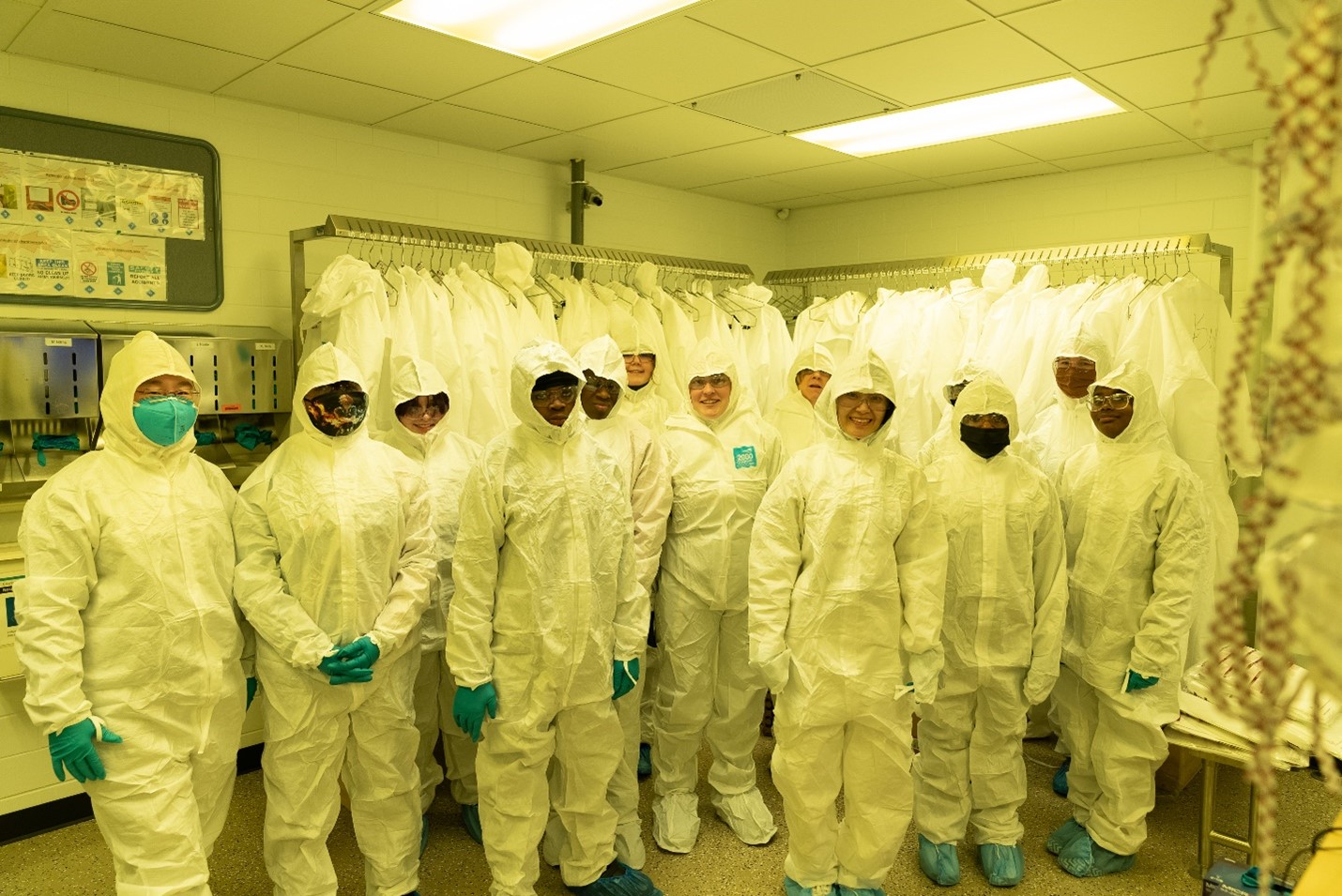
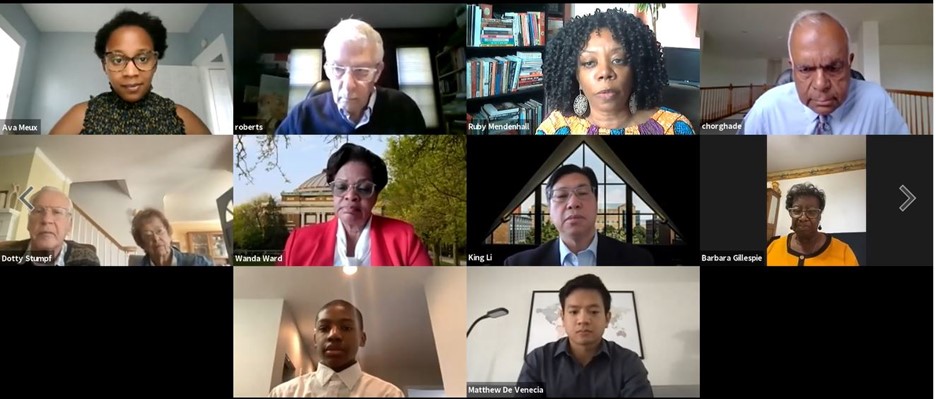
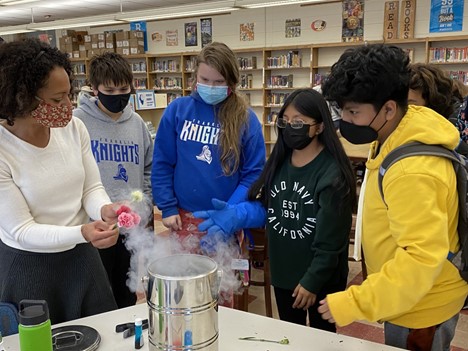


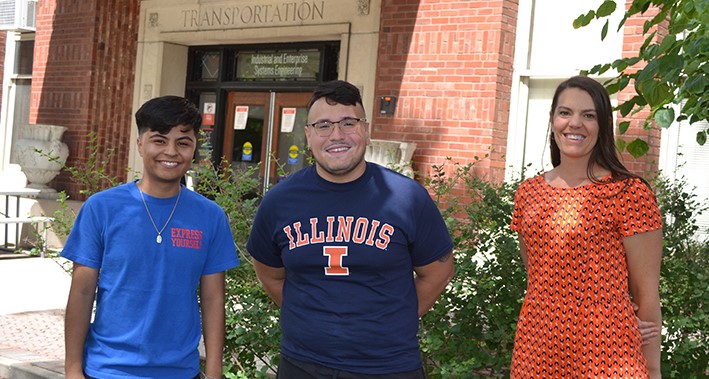



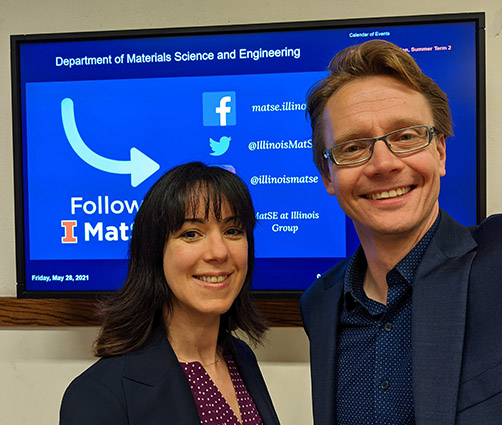

.jpg)




